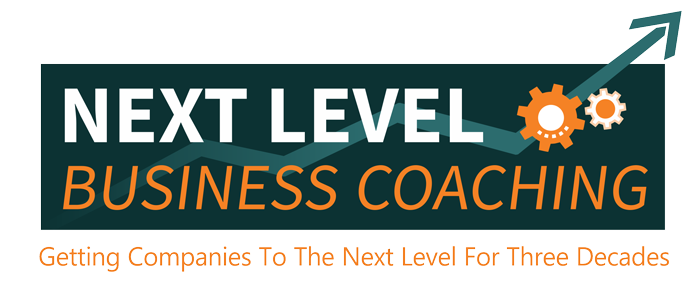The Answers To These Eight Simple Questions Will Profoundly Impact The Future of Your Company
There are two situations that I have witnessed in a high percentage of the over 200 companies I’ve had as clients in my 30-plus years of being a business growth coach:
- The 1st is the propensity for the leadership team to overcomplicate their business. Because the leadership teams spend nearly all of their time working in the business, as opposed to working on the business, they fail to recognize the complexity that’s grown in their business. Organizational complexity creates many issues that impact customer service, business growth, and profitability.
- The 2nd situation I’ve witnessed repeatedly is that seldom is a leadership team 100% on the same page with where the company is going, and how they plan to get there. Consider, that if the leadership team has differing visions about the future of the company, how are employees supposed to understand the vision, internalize the plan, and truly want to be a part of it?
What I’m going to lay out are the essential Eight Questions that every leadership team needs to answer to crystalize the vision for the future of their organization. We keep these Eight Questions on a simple, two-page document called a Vision/Traction Organizer, or “V/TO” (Download V/TO). We call this an “entrepreneurial approach” to strategic planning because the end product is a two-page document. So, without further ado, let’s dive into the eight questions:
Q1. What Are Your Core Values?
Core Values are just a set of guiding characteristics that define who you are at your core and what you want from the culture of your organization. We take our clients through a discovery exercise to help them discover their true core values, then we show them how to use their core values to attract great employees who fit their culture like a glove, and how to use their core values to repel employees who aren’t a great fit for their organization.
Q2. What Is Your Core Focus?
Your Core Focus is the sweet spot of your organization. It has been called a million things throughout the history of business. Stephen Covey calls it “The Voice”. Jim Collins calls it the “Hedgehog Concept”. Companies tend to lose focus from a product or customer standpoint and try to be all things to all customers. Many leadership teams suffer from the proverbial “shiny-object syndrome” as they try to grow the business by pursuing new and often diverse opportunities. Once your Core Focus is clearly defined and articulated, the trick is to stay laser-focused within your core focus so that you’re always working within your sweet spot.
Q3. What Is Your 10-Year Target?
This is just a long-range, big business goal. The time frame is flexible, anywhere from 5 to 30 years. It’s a clearly articulated, simple number one business goal that gets every employee on the same page with where you’re going long term.
Q4. What’s Your Marketing Strategy?
Your Marketing Strategy is simply designed to get the leadership team 100% on the same page with who you should talk to, and what you should say, to get the biggest ROI on your investment in precious sales and marketing energy. There are four parts to the Marketing Strategy:
- Target Market
- Three Uniques
- Proven Process
- Guarantee
The Target Market is about getting your leadership team to all agree on the demographic, geographic, and psychographic profile of the types of companies or people you should be laser-focused on proactively selling to.
Three Uniques are just the three differentiating characteristics that make you better or different than your competitors.
Proven Process is a one-page visualization of the way you take care of your customers from the minute they start thinking about doing business with you, to the time they are longtime satisfied business partners.
Guarantee is simply a pledge of a promise that reduces the fear of adoption and helps to eliminate objections normally encountered in the sales process.
Q5. What’s Your Three-Year Picture?
We then crystalize the Vision for the organization and bring it down to the ground by making it real with your three-year picture.
What we are trying to do is get every member of the leadership team to crystalize and visualize exactly what your company needs to look like in three short years. We start by defining your revenue, profit, and measurables, in terms of what the company needs to look like on the way to achieving your ten-year target.
Then we’ll identify 5 to 15 additional bullets that paint a clear picture of what the organization needs to look like three short years from now.
Developing your Three-Year Picture does two powerful things:
1st, if every member of the leadership team can see the same three-year picture in their minds eye. The probability that the company will achieve its three-year goals goes up significantly and,
2nd, it sets up for creating a highly focused One-Year Plan.
Q6. What’s Your One-Year Plan?
We use the same predictions, revenue, profit, and measurables for your One-Year Plan, as we did on your Three-Year Picture. Then we set 3 to 7 clear, aligned goals, not 23, because when everything is important, nothing is important. One of the phrases we use frequently when implementing EOS is, “Less is More.”
Q7. What Are Your Quarterly Rocks?
“Rocks” are just 90-day business priorities that get every employee on the same page with what’s most important over the next 90 days, creating what we call a “90-Day World” for the organization.
We start by predicting revenue, profit, and measurables for the quarter. Then we identify 3 to 7 priorities for the company over the next 90 days and 3 to 7 priorities for each member of the leadership team truly crystalizing their priorities and the priorities of those reporting to them.
Introducing Rocks into a company creates a new level of discipline, focus, and accountability so that every employee is executing the company’s Vision every 90 days.
Q8. What Is Your Issues List?
Every organization has plenty of issues at every level in the company. The trick is to get all the issues that exist in your company onto an Issues List somewhere in the organization so that they can be solved once and for all.
Once you’ve answered all eight questions, you’re all on the same page. It’s a simplified, approach to strategic planning that culminates in a two-page plan that is much easier to implement.
A Final Comment
Regardless of whether your company has 20, 200, or 2,000 employees, ultimately your vision and plan must be communicated to your employees by delivering a Quarterly State of the Company Address. How else are your employees going to see the same vision? How else are they going to understand your plan, internalize it, and want to be a part of it?
Ultimately, you then get to the point where everyone in your company is rowing in one direction, trying to help you achieve the same Vision and Plan that you all share.
To the extent you do this well, the planets line up in the universe in ways you can’t even explain, and magic happens!




Leave a Reply
Want to join the discussion?Feel free to contribute!